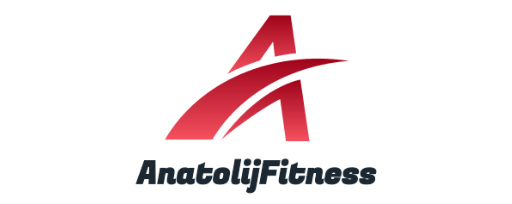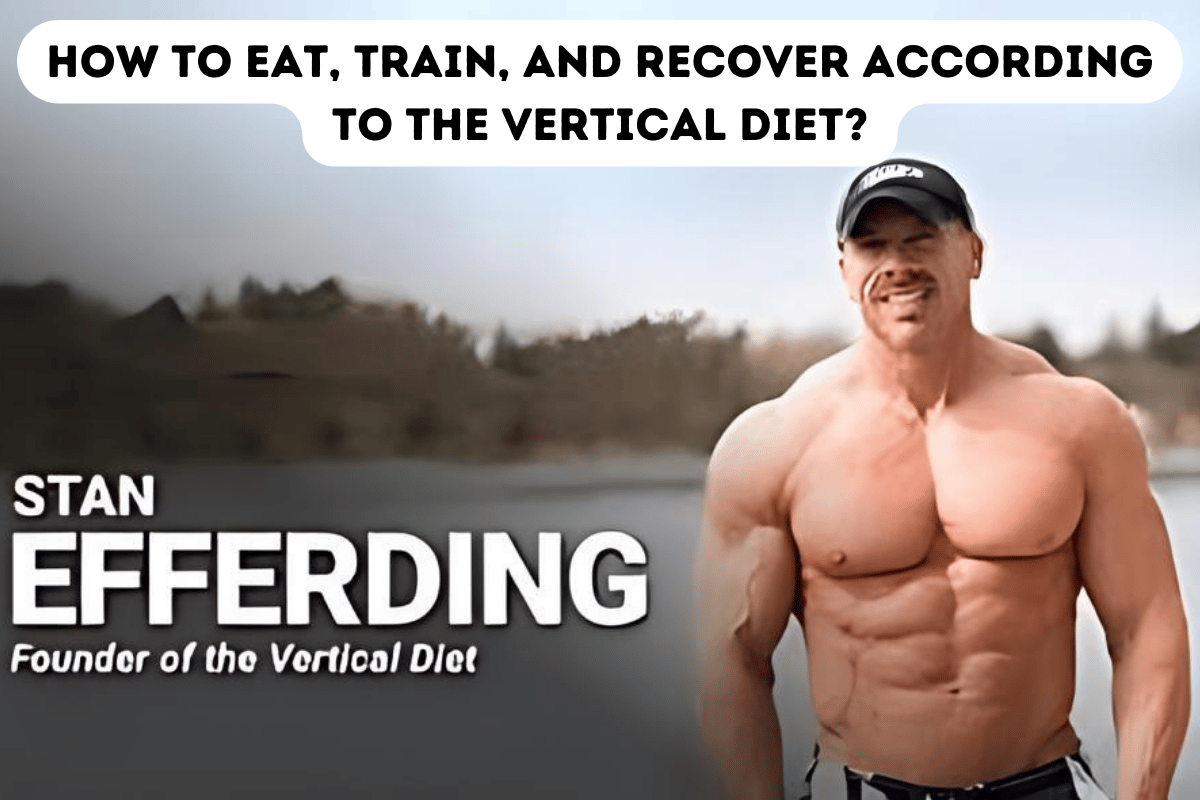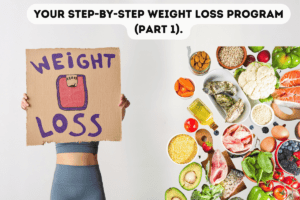Vertical Diet is a performance-based diet explicitly designed for athletes who want to lose weight, build muscles, or improve performance. It is unique because it includes both diet, training and recovery protocols. You can’t lose weight or gain muscles just with diet; you need to exercise (to burn calories or gain muscles) and you need to recover properly to be ready for the next training sessions. You can find all these things in a Vertical Diet in one system. And today, in this article, we will discuss how to gain or lose weight, train, and recover according to a vertical diet. So, let’s get started.
How to gain or lose weight on a vertical diet?
According to the Vertical Diet, muscle gain and weight loss principles are straightforward. If you want to lose weight, you need to maintain a calorie deficit (eat less); if you want to gain muscles, you should keep a calorie surplus (eat more). It’s nothing new. I speak about these principles in all my articles about weight loss. But here is the problem: when you are in a calorie deficit, you always feel hungry because your body is not getting enough calories. This is the main problem that causes many diets to fail.
Another problem is weight gain. You must have a calorie surplus when trying to increase muscle mass (for some athletes, it can even be 8000 kcal/day). Sometimes, you just don’t have the appetite to eat such a large amount of food or even start getting digestive issues because some foods can upset your stomach. Vertical Diet is designed for athletes and helps solve all these issues. The basic principles of Vertical Diet regarding weight loss, weight gain and weight maintenance are shown below in diagram:
| Weight loss | Maintenance | Weight gain | |
| Protein | 2.4g/kg | 2.0g/kg | 1.6g/kg |
| Fats | 0.6-0.8g/kg | 0.6-0.8g/kg | 0.6-0.8g/kg |
| Carbs | The rest = 500 cal deficit | The rest = maintenance | The rest = 500 cal surplus |
According to Stan Efferding, for weight loss, it doesn’t matter what diet protocol you are following. It can be a high–fat, low-carb, or low-fat diet. In a Vertical Diet, everything is straightforward. If you want to lose weight, you need a calorie deficit; if you want to gain weight, you need a calorie surplus. How many calories you consume is the most critical factor in weight loss or gaining weight.
The second important factor is the percentage of macronutrients (how much carbs, fat, and protein you need). Protein is the most important macronutrient. As you can see, when you lose weight, you must increase protein intake to save muscles during weight loss. Protein is also a very satiating macronutrient that helps preserve appetite and doesn’t feel hungry being in a calorie deficit. As to carbs and fats on a weight loss program, it is a matter of personal preference. You can reduce calories (500kcal deficit) from fat or carbs. If you are gaining weight, you need to decrease protein and increase carbs more to increase appetite. If you have to eat a large number of calories (for example, 8000kcal/day), you need to eat such products that don’t create digestive issues. You can read what products to choose on a vertical diet in my article: “What is a Vertical Diet”.
The third most important component of a Vertical Diet is meal timing. Stan Efferding suggests eating 3-5 meals a day, divide your daily total protein intake evenly among these meals and eat 60-70% of your daily carbs before and after training.
Metabolism and weight loss.
Also, Stan Efferding, in his book: “The Vertical Diet”, is telling that to understand how weight loss works, you need to understand your metabolism and how you can increase your metabolism. Your metabolism is how quickly you burn calories and convert them into energy. This energy then goes for different biological functions like digestion, breathing, walking, exercising and many other chemical reactions. According to Vertical Diet, there are four main functions that use your daily calories (energy):
- Basal metabolic rate (BMR). It is a number of calories (energy) your body uses for basic bodily functions like breathing and heartbeat. It is the amount of energy your body will burn even if you lie all day in bed and do nothing. BMR takes about 60-70% of your body’s energy needs. You can read more about calculating your BMR in my article: “The secret of all diets, or what is a calorie deficit”. What you need to know here is that BMR calculation includes your body weight. The more muscles you have, the more calories you will burn at rest and increase your metabolism. That’s why resistance training is so necessary.
- Digestion. It can be a surprise for you, but about 10% of your energy needs are related to digestion. This means that when you eat, you not only get calories, but your body also burns some energy for digestion. This means that if you eat your meals more frequently, you are burning more calories for digestion. Also, some foods take more time to digest than others. For example, a steak requires more time and energy to digest than baked potatoes or rice.
- Exercising. It can be surprising for you as well, but just 5% of your energy is spent exercising (such as running or lifting weights). The amount of energy you burn during exercises depends on how long and how often you exercise. I wrote about the best exercises for fat loss in my article “What is the best exercise for fat loss?”
- Daily life activities. About 15% of your energy needs are going to your daily activities like driving, shopping, cleaning, walking and so on. As you can see here, your body is burning more energy on daily activities than training. This shows the importance of being active during the day if you want to lose weight. If you think that to lose weight you just need to go to the gym and all other time you can just lie in bed, watch TV and eat crisps, you are wrong. If you want to lose weight, being active during the day is very important. One of the best ways to do it is to do more walking. More about this we will discuss later in the article.
| Percentage of daily calories | Used for |
| 60-70 percent | Basal Metabolic Rate (BMR) |
| 15 percent | Daily activities |
| 10 percent | Digestion |
| 5 percent | Training |
How to increase your appetite?
If your goal is to increase weight, you need to be in a calorie surplus. To increase muscle mass, some athletes must eat about 8000 kcal, which can also be challenging. Stan Efferding, in his book: “The Vertical Diet”, gives some ideas on how you can increase your appetite to get that calorie surplus for your weight gain. Before discussing these suggestions, you must understand that this calorie surplus should come from good food sources. Eating as much as you can of anything will make you gain more fat, which will negatively affect insulin sensitivity and cause you to gain even more fat. Your food must help you to build muscles, not fat. You can read more about what food to choose in my article: “What is a Vertical diet”. Now, let’s start with suggestions on how you can increase your appetite:
- Decrease your fat and protein intake. Fat and protein are very satiating macronutrients that suppress your appetite. Increasing protein is good for weight loss, but for mass gain, you should decrease protein to 1.6g/kg or even less. Saturated fat should comprise less than 10 per cent of your total daily calories.
- Eat lots of carbs. When you decrease your protein and fat, you should increase your carbohydrate intake. Carbs are easier to digest, making you hungry more often. White rice is the main carbohydrate suggested for a vertical diet. It doesn’t mean that you can’t eat other carbs like pasta, potatoes, oatmeal, and bread. You just need to know that these foods have more gluten, lectins and phytic acid in them, which can wreak havoc on your stomach, if you eat them in big quantities. Again, you can eat bread, pasta, oatmeal and potatoes in small quantities, but if you really need lots of calories from carbs, it is better to eat white rice because it is easier on your stomach.
- Eat fresh rise only. Stan Efferding suggests that cooling your rise after cooking creates resistant starch that can’t be easily digested, so better buy a good rise cooker to make sure it’s always fresh and warm.
- Choose foods that digest easily. One of the important principles of a vertical diet is to improve your digestion. There are such things like food allergies and food intolerance. Allergies can kill you, while food intolerance just upsets your stomach. Eating food that can negatively affect your digestion in small quantities may not create a problem, but when you have to eat big amounts of food, it is better to ensure that you are eating easy to digest food. More about main vertical diet principles and better digestion look in article: “All about Vertical diet”.
- Sprinkle dextrose powder on your rice. A little bit of dextrose makes your rice easier to eat and digest. Dextrose stimulates saliva production, so there is more amylase to initiate the breakdown of starch.
- Drink orange juice. Orange juice just helps to stimulate the appetite, so drink it in small amounts before or during a meal.
- Move more. Because you are eating more carbs on the mass gain program, you have more energy for training. So, you can easily increase your workout frequency and volume, but don’t forget about recovery. Always take a ten-minute walk after each meal (it helps digestion and lowers your insulin) and exercise with weights at least two days a week.
- Eat more frequent meals. After eating a meal, your metabolic rate increases by approximately 10% for a short time. This happens because our body needs to burn some energy to digest food. So, each time you eat, you are ingesting calories from food but also burning some calories to digest this food. If you are eating more frequently, you are burning more calories for digestion, and like this, you are increasing your metabolic rate for a while. It doesn’t mean you can’t lose weight by eating just two meals a day.
- Other suggestions. According to Stan Efferding, you must salt all of your meals. Sodium makes you hungry and works with water, calcium, and glucose to facilitate performance-enhancing benefits. Next, don’t drink too much water before a meal. Filling your stomach with water makes you less hungry and may dilute your stomach acid, which inhibits digestion. And last, eat just one Dorito an hour. No one knows why, but after eating just one Dorito after a meal, you will starve an hour later.
How to train and recover according to vertical diet.
Nutrition is a huge part of changing your body composition and optimizing health, but other factors can make or break your success: exercise and recovery. Luckily, the Vertical Diet includes all these components together. Suppose you want to reach your goals in weight loss, muscle gain or just improve performance. It would help to incorporate such protocols into your weekly schedule, such as cardio and resistance training, daily activities, and recovery. Now, let’s look separately at each of them:
- Cardio. The best cardio, according to Stan Efferding, is HIIT training. One of the most significant advantages of HIIT is that you can burn more calories in minimal time. According to research, just a 10–30-minute HIIT workout can help you burn the same number of calories like in 1h of steady-state cardio. Moreover, HIIT training can help you burn calories even after you’re done exercising. Like with resistance training, due to the intensity of the workout, HIIT can elevate your RMR for hours after exercise. Also, there is an opinion that HIIT could shift the body’s metabolism toward using more fat for energy rather than carbs.
- Resistance training. The biggest benefit of resistance training for fat loss is that it increases your resting metabolic rate (RMR), and you burn more calories at rest when you have already left the gym. Also, the more muscles you have, the more energy and nutrients they need. Increased muscle size will increase your RMR as well.
- Daily activities. We already discussed how much energy you need and what activities your body needs. According to that formula, 70% of our energy needs go on resting metabolic rate (RMR), another 10% go on digestion, 15% of our energy needs would go on our daily physical activities, and just 5% we are burning by going to the gym. According to this formula, you can see how daily activities are important for fat loss. The best daily activities to burn more calories would be walking instead of driving or taking the bus, eventually aiming to achieve 10,000 steps a day; Cycling to school, college or work instead of using a car; Use stairs instead of a lift or cleaning your house more often, gardening. According to Stan Efferding, the best ways you can burn more calories during the day is walking. 10-minute walks done several times a day (especially after your meal) are very effective for increasing insulin sensitivity by 30%, reducing high blood pressure, lowering high blood sugar, reducing insulin and, of course, weight loss. Walking would be especially beneficial for overweight, obese, and unfit people because, for them, this activity is more achievable and manageable. Moreover, you can walk anywhere and anytime. You can read more about the importance of daily activities in my article: “Why it is important to be active during the day, or what are the benefits of daily physical activity?”.
- Recovery. To reach your sports goals effectively, you must schedule some days off for recovery. If you are not recovering properly, you can get overtraining or even injury. The most important part of recovery after training is good quality sleep. The more you train, the more sleep you need. When you are asleep, your body makes repairs to your muscles, central nervous system and produces growth hormone testosterone. On other hand, lack of sleep can increase the risk of health issues like high blood pressure, cardiovascular disease, diabetes, depression and obesity.
But remember that recovery is about more than just lying in bed and doing nothing. This will make you stiffer and slower down the recovery time. It is okay to spend one day off binge-watching Netflix, but you should do active recovery on other days. Active recovery means you must move. When you take 10-minute walks after a meal, hike, or bring your kids to the park, you get your body moving and blood circulating. All these helps to recover faster. Also, such things as a sauna, cold shower, and stretching will help you recover.
Conclusion.
Looking at everything above, the main principles for weight loss and weight gain, according to vertical diet, are calorie deficit for weight loss, and calorie surplus for weight gain. Adjusting your calories according to your goals is the most critical factor. The second important factor is the percentage of macronutrients (how much carbs, fat, and protein you need). The third most important component on a vertical diet is meal timing. You should eat 3-5 meals a day, divide your daily total protein intake evenly among these meals and eat 60-70% of your daily carbs before and after training. Also, it is essential to understand metabolism. You can increase your metabolism by exercising (HIIT or resistance training the best), being more active during the day, eating enough protein with each meal (takes more energy to breakdown), eating more frequent meals and optimizing thyroid function (endocrine gland responsible for metabolism). And don’t restrict calories too much because it can slow down your metabolism and result in a nutrient deficiency.
If your goal is to gain weight, you need to be in a calorie surplus. The problem here is to eat more calories than necessary. Stan Efferding suggestions can help you with that. To increase your appetite, you should decrease the amount of protein, increase the amount of carbs, eat more frequently, move more, and choose foods that digest easily. Also, hacks such as drinking orange juice before or during a meal, sprinkling dextrose on the rise, and eating just one Dorito after a meal will help you increase your appetite.
To reach your goals, you need not just diet alone but also train and recover properly. The best exercises for weight loss would be a combination of HIIT and resistance training. For muscle gain it would be resistance training and walking as a cardio (if you afraid to burn muscles by doing HIIT training). Daily activities are also very important for weight loss and overall health. As to recovery, you must make sure you are getting enough sleep and using active recovery. Lying in bed all day is not the best way to recover after training. You’d better go outside for a walk, take your kids to the park, do cycling or even do some light cardio to get your body moving and blood circulating. All these helps to recover faster. Also, such things as a sauna, cold shower, and stretching will help you recover.




